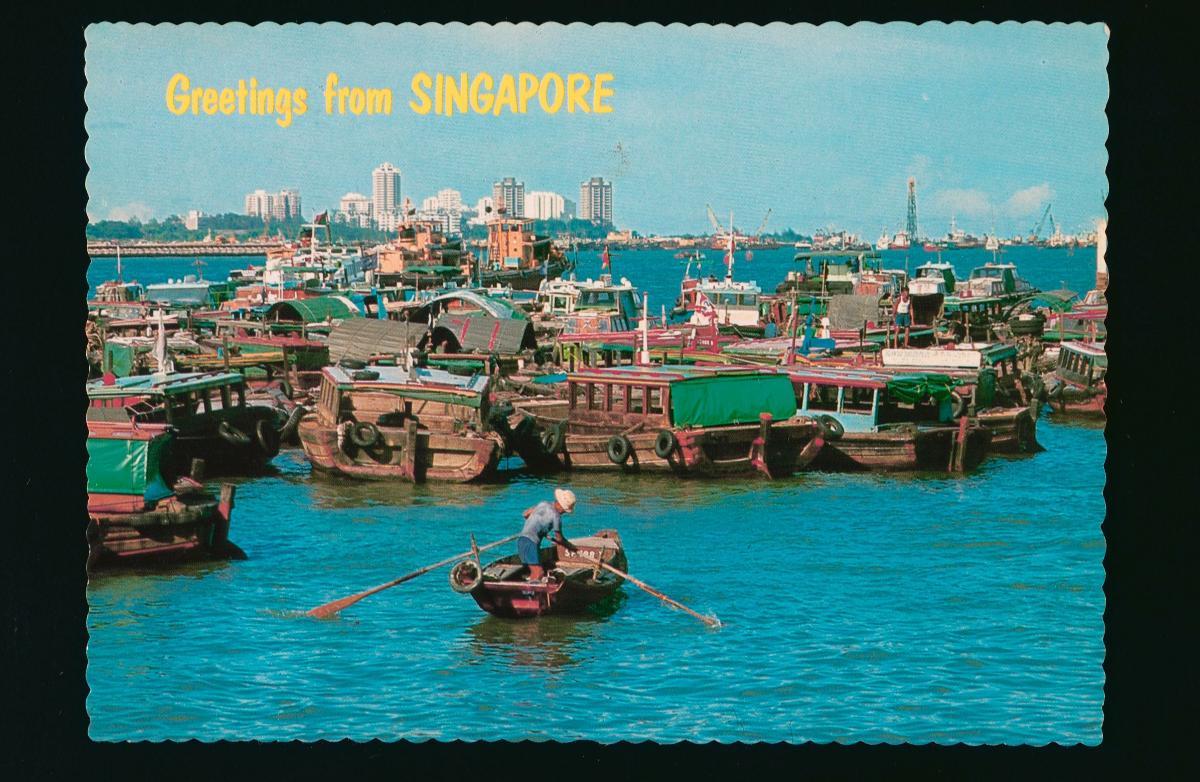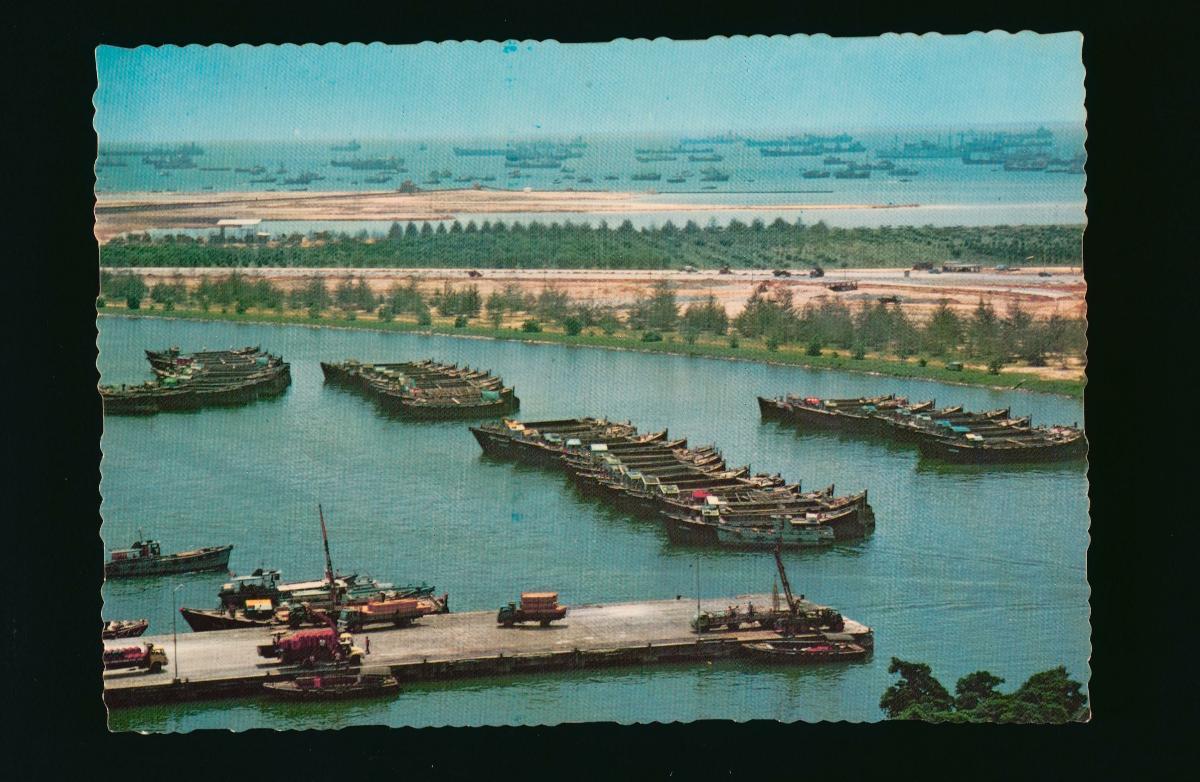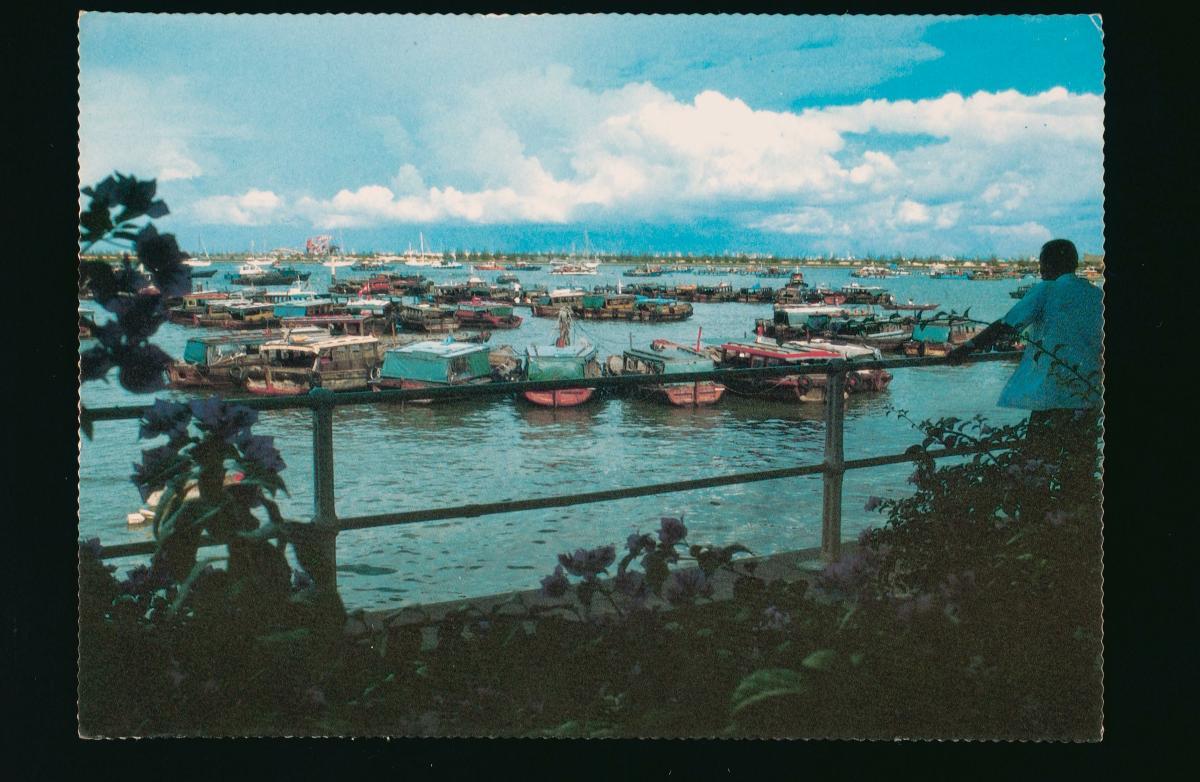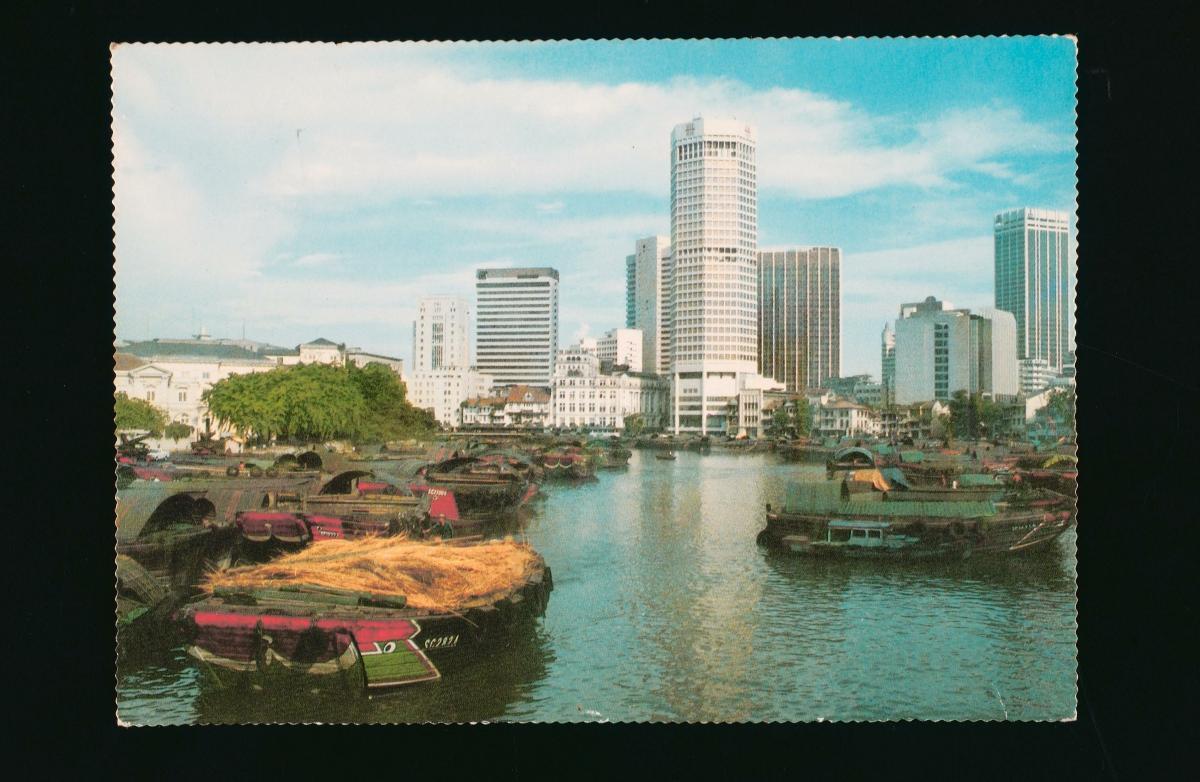The ‘twakow’ was a Chinese-crewed lighter vessel that first appeared on the waters of the Singapore River in the second half of the 19th century. By 1900, it had displaced the ‘tongkang’ (light wooden boat) and Indian lightermen as the vessel of choice for transporting cargoes to and from ships anchored in the harbour. Influenced by traditional Chinese nautical designs, the squat-looking craft had a wide hull with an almost flat bottom designed for carrying heavy loads in shallow waters. Originally propelled by punt poles and a sail, the motorised twakow began to appear in the 1930s although non-motorised versions continued to remain in operation well into the 1950s. Eye motifs were often painted on the bows (its colour represented the region in China where the vessel came from) of these vessels not only for superstitious reasons but also to serve as load lines that indicated when the vessel was fully loaded. In the 1980s, most of these vessels were barred from the Singapore River as part of the Clean Rivers Campaign. However, some twakow continue to remain in operation today ferrying tourists up and down the river.















